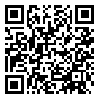BibTeX | RIS | EndNote | Medlars | ProCite | Reference Manager | RefWorks
Send citation to:
URL: http://journal.refah.ac.ir/article-1-128-en.html
The rise of virtual media has significantly impacted how people communicate in recent years. However, the spread of misleading and suspicious information on social networks poses serious challenges to society. For this reason, detecting false information on these platforms is of great importance. Social networks allow for the rapid production and dissemination of large volumes of diverse content, making it difficult to assess the accuracy and reliability of the information shared. This task requires collaboration between humans and computers, as it cannot be achieved solely through automated systems.
At the same time, the right to free access to information is recognized as a fundamental human right in both national and international legal frameworks. Every citizen is entitled to accurate domestic and global news and developments, using the press and other media to express and exchange ideas. This article provides a thorough examination of the methods used to detect online misinformation, commonly referred to as "fake news." Many of these methods focus on analyzing the characteristics of users, the content, and the platforms where the news is published. By exploring these approaches, the research aims to offer recommendations on how to ensure citizens have proper access to accurate information, in line with their right to free access to information.
Received: 2024/09/30 | Accepted: 2025/02/5 | Published: 2025/05/26
| Rights and permissions | |
 |
This work is licensed under a Creative Commons Attribution-NonCommercial 4.0 International License. |



